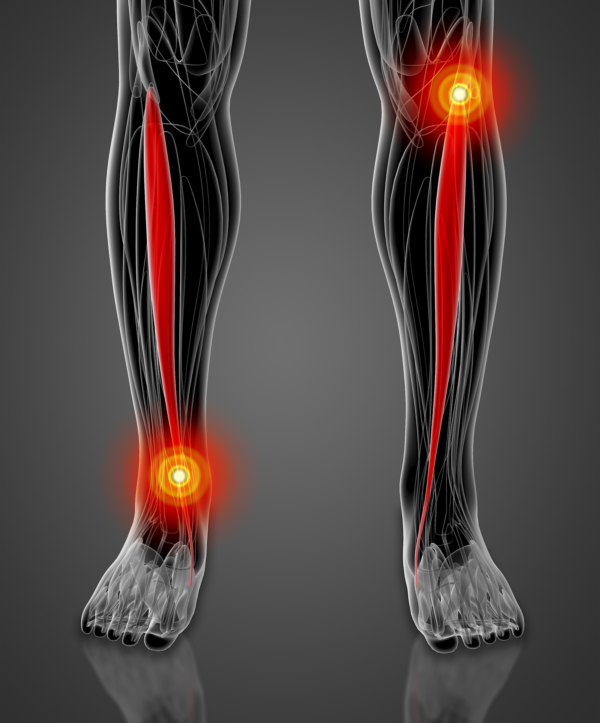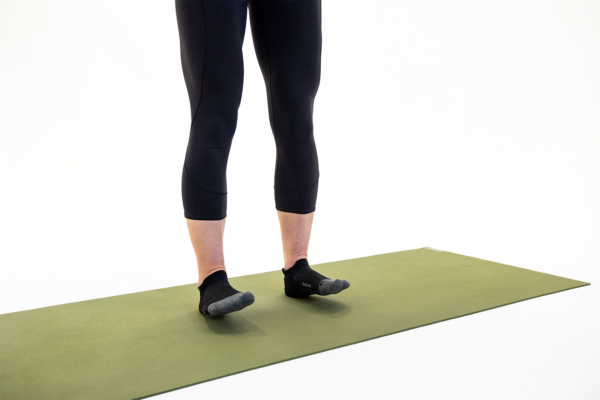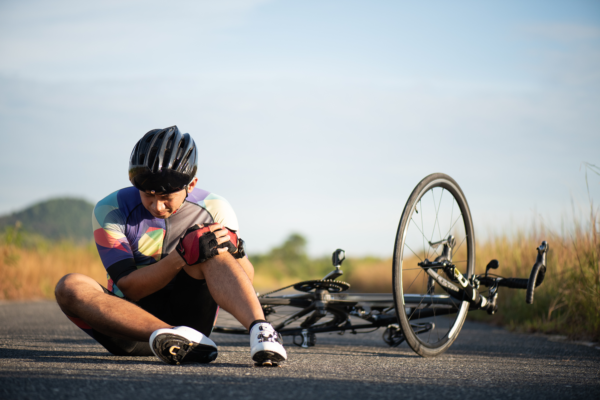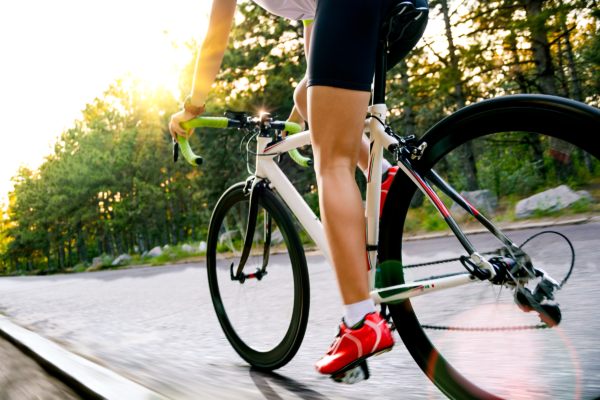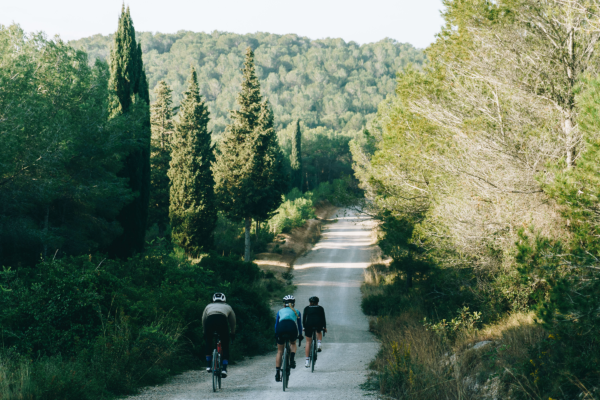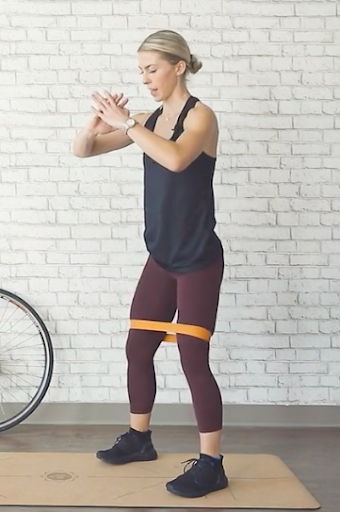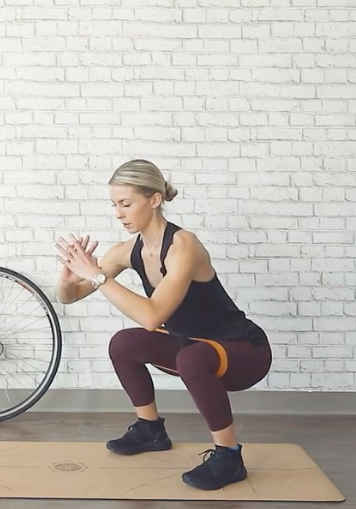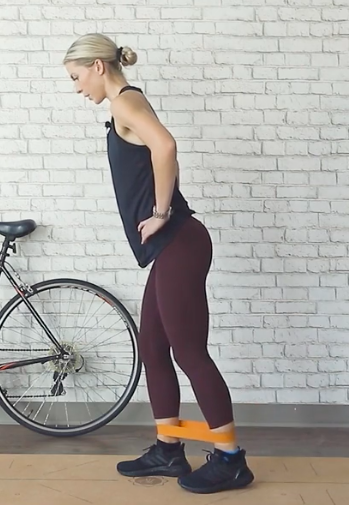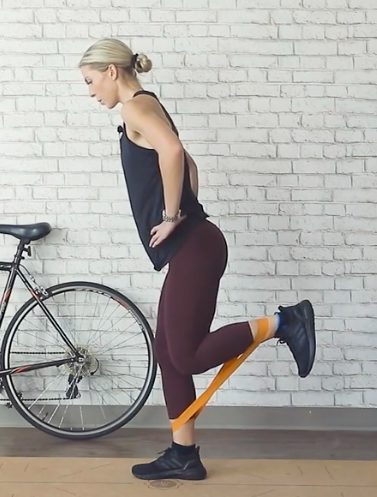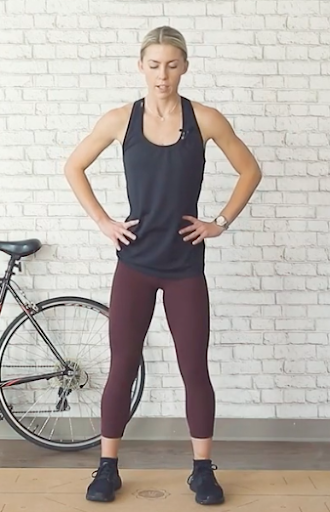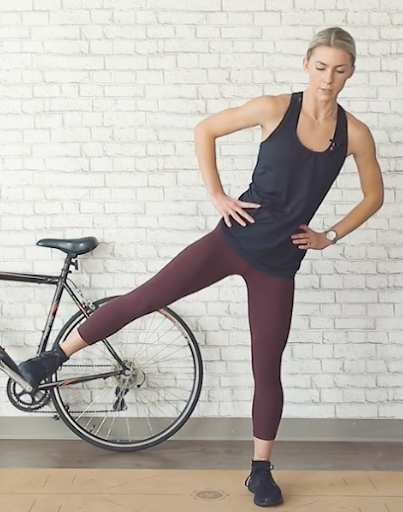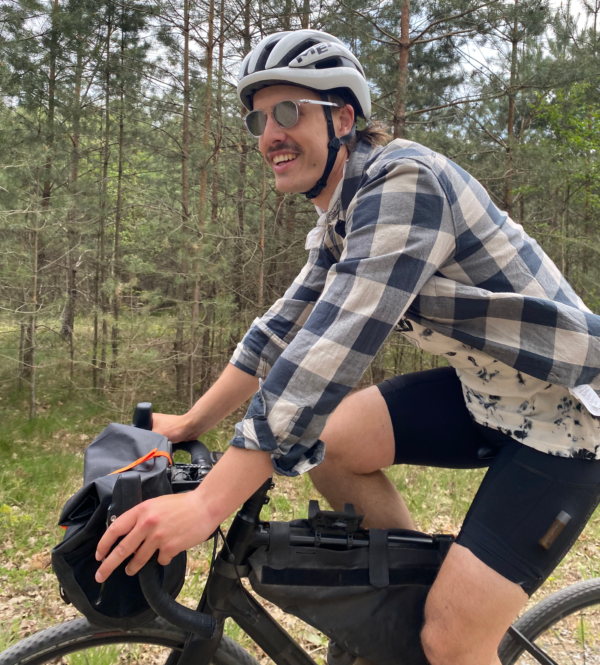Cycling neck pain is one of those nagging issues that can really hinder the other aspects of your life. The muscles in your neck are constantly supporting your breathing, interacting with your shoulders, holding up your head, and countless other important functions liable to irritate any pain, soreness, or injury that could be developing or already present from cycling.
The reality of our sport means that the neck is going to have to sit in some uncomfortable positions from time to time. In fact, up to 60% of cyclists experience some sort of discomfort in this area. Whether our necks are prepared to go into those positions, how we can prepare them, and what we can do to optimize our necks on the bike will be the focus of this article.
Neck pain from cycling doesn’t have to slow you down, and we’re here to help you fix it once and for all.
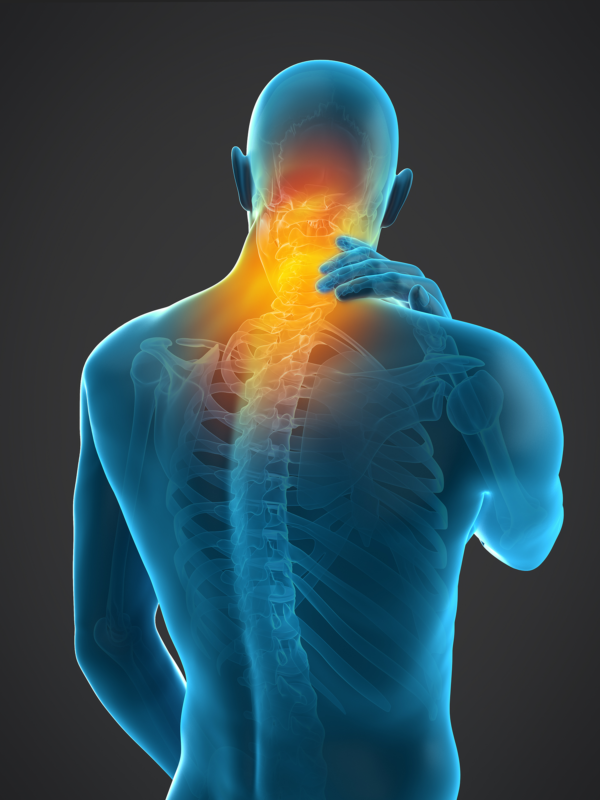
(Image credit: SciePro/Adobe Stock)
Causes of Cycling Neck Pain
Does cycling cause neck pain? The short answer is yes, but the reasons behind it can be complicated. We have to approach the topic of cycling neck pain through a wide-angle lens, because it’s seldom a single factor causing the problem.
Forward Head Posture (FHP)
FHP is an epidemic not just amongst cyclists but the general populace as a whole. The term is referring to the forward position of the cranium (head) relative to the shoulders and spine. Also commonly called text neck, scholar’s neck, or computer neck posture because of its correlation and likelihood of development after prolonged texting, reading, or spending time on a computer.
What many people don’t realize is that their head, on average, weighs 10-12 pounds, and that this weight gets amplified tremendously as the head moves/tilts forward from the midline. For every inch of FHP, it adds roughly 10 pounds to the head. As you can see in the below picture, this can equate to the neck having to support 60+ pounds of sustained pressure throughout the day.
(Image credit: New York Spine Surgery & Rehabilitation Medicine)
The big ropes you see on the sides of a person’s neck are called your sternocleidomastoid muscles. These muscles get overdeveloped and tight as a result of FHP, and can also flatten the natural backwards curve in your cervical spine. These conditions strain the neck, reduce blood flow to the brain, and weaken the extensors of the neck resulting in reduced stability.
Cycling naturally puts us in positions of FHP, and trains us to hold those positions for long periods of time. Leaning over the handlebars causes the head to protrude forward and the neck to crane back in order to keep our eyes level with the horizon (righting reflex). Because these positions are unavoidable, we have to find ways to correct them in other parts of our training.
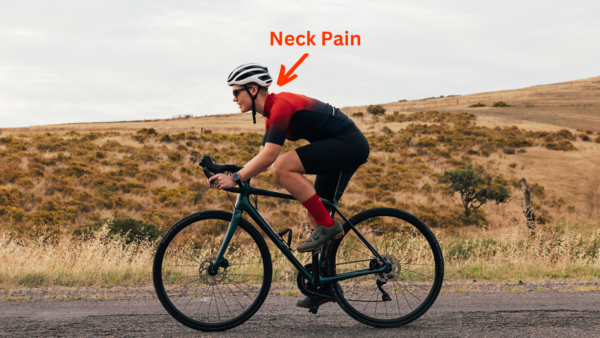
Notice the position of the head and neck of this cyclist; protruding forward, craned back. (Image credit: Artem Varnitsin/Adobe Stock)
Improper Breathing
Breathing and neck pain are intimately connected. Optimal inhalation is accounted for primarily by the diaphragm, a large, thin sheet of muscle that separates the chest cavity from the abdominal cavity. When contracted, its dome shape flattens out to pull air into the lungs and create room for them to expand. If it’s stiff or not functioning properly, however, other muscles get overloaded.
A muscle group in this category is known as the scalenes. They work as accessory respiratory muscles to help you inhale by lifting the first two ribs. When a person breathes through their chest as opposed to their diaphragm, these muscles get overworked and start to become irritated as a result. Chronic neck pain is often improved by addressing these kinds of faulty patterns.
The three muscles of the scalene group; anterior, medial, posterior. Notice the insertions on ribs one and two. (Image credit: Mikael Häggström/Public Domain)
Because cycling is a cardiovascular intensive sport, coupled with the positions we find ourselves in while riding, make it probable that we will develop a faulty breathing pattern that overworks the neck. Being folded over on the bike can discourage movement of the diaphragm and push our breath up into the chest, where we are only able to inhale ⅓ of the oxygen we could otherwise.
Opening up the breath through breathing re-education exercises, fixing the posture, and corrective stretching are all tools we can use to help combat this issue. By now you’re probably starting to see the links between these causes and how they all can contribute to cycling neck pain.
Upper Cross Syndrome (UCS)
Upper cross syndrome (UCS) is a postural imbalance that occurs as a result of prolonged sitting or standing in a forward head and rounded shoulder posture. It is characterized by tightness in the upper trapezius, levator scapulae, and pectoralis major muscles, as well as weakness in the deep cervical flexors, lower trapezius, and serratus anterior.
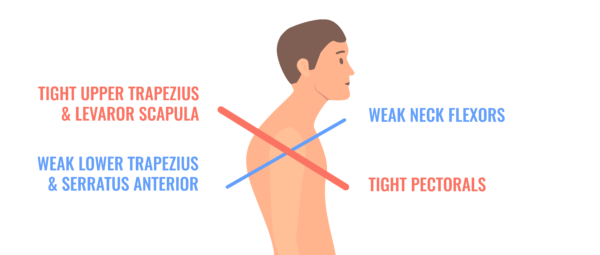
(Image credit: art4stock/Adobe Stock)
Cycling requires a sustained forward head and rounded shoulder posture, which can exacerbate UCS. The tightness in the upper trapezius, levator scapulae, and pectoralis major muscles can cause increased tension and compression in the cervical spine, as well as inhibit your breathing, which all further contribute to the problem.
Additionally, weakness in the deep cervical flexors, serratus anterior, and lower trapezius muscles can lead to decreased stabilization of the cervical spine. This can be especially problematic for cyclists who spend prolonged periods in a forward head position, as the neck muscles are required to maintain stability and support the weight of the head.
Poor Bike Fit
Having an improperly fitted bike is going to exacerbate all of the above causes of neck pain in cyclists. Symptoms of a poor bike fit include:
- Handlebars too low or having to reach too far forward
- Rounds the back/shoulders and closes the chest, encourages forward head posture
- Arms locked out in extension
- Having a soft bend in the elbows allows force from the handlebars to be cushioned while riding, otherwise reverberating up into the neck
- Saddle tipped too far forward
- This increases weight bearing load on the arms and increases the likelihood of the previous point occurring
- Poor adjustment of helmet and/or eyeglasses
- A helmet too low on the head will cause a cyclist to crane their neck excessively, the same problem will occur with eyeglasses sitting too low on the nose
Solutions for Cycling Neck Pain
The causes of neck pain in cyclists are often co-contributing to one another, sometimes making it difficult to pinpoint the exact root of the problem. However, there are some common preventative/corrective measures we can take to help alleviate the above causes and more by following the advice below.
Strengthen the Upper Back & Neck Extensors
To combat forward head posture and upper cross syndrome that develops as a result of cycling (and other modern activities like office work and driving), we can do exercises in our supplemental training to strengthen the muscles that get weak and hyperactive as a result of improper positioning/loading.
Here are two exercises to help address this:
Prone Cobra/Cobra Hold
Instructions:
- Lying prone on your mat, pull your shoulder blades down and together so your arms are in a position like our coach Alisha’s (pictured above)
- From here, lift your chest as high as possible off the ground
- Squeeze the shoulder blades together, flatten and extend the mid back, and contract the glutes and lower back muscles as well
- Keep your neck in a neutral position by pulling it backwards (think of making a double chin)
- Hold this position for 30 seconds
- Rest for 30 seconds
- Repeat three times
This exercise works the mid/upper back, as well as the extensors of the neck in a static hold, which is important for postural endurance. Increased strength in these areas has multiple benefits, including a significantly reduced risk of concussions.
Wall Lean
Instructions:
- Start with your feet about one foot away from the wall
- Place a towel behind your head and lean into it, keeping the body in a stiff, neutral position (straight line)
- Support yourself with your neck in this position, if it is too easy, you can place your feet farther away from the wall
- Hold for 30 seconds
- Rest for 30 seconds
- Repeat three times
The wall lean is a simple exercise to work the neck extensors, which get weak if the head is constantly protruding forward. Strengthening these muscles will help correct forward head posture and pull the head back into better alignment.
Stretch the Sternocleidomastoid, Shoulder & Chest
It is important to couple the following stretches with the above strengthening exercises. These muscles are getting tight and causing neck pain because they’re working hard to try and support us in unnatural positions on the bike. If we stretch them without providing support through corrective strengthening we will only further our risk of pain and injury.
Try these three stretches to counter the muscle tightness that develops from cycling and contributes to neck pain in cyclists:
Lateral Neck Stretch
Instructions:
- Stand in a relaxed and comfortable position
- Tilt your head gently to one side, make sure to avoid tilting forward or backward
- Rest your hand on the top side of your head
- Don’t pull, but let the weight of your hand gently stretch your neck to the side
- Hold for 15-30 seconds
- Repeat on other side
Cyclists with neck pain will help release a likely hyperactive sternocleidomastoid muscle by performing this stretch. Coupled with the neck and upper back exercises listed above, you’ll be offering multiple modes of relief to the painful areas.
Dynamic Shoulder Rolls
Instructions:
- Stand with your shoulders relaxed
- Roll your shoulders up high towards your ears, then back (squeezing your shoulder blades together), and finally back down and pulling away from your ears
- Complete these circles continuously for 30 seconds
- Reverse the motion, rolling your shoulders forward
- Repeat for another 30 seconds
This simple exercise helps loosen up and mobilize your shoulder blade and trapezius muscle. The upper trapezius and levator scapulae muscles often get tight as a result of cycling. This movement helps loosen them and is great to do pre/post ride.
Single Arm Chest Stretch w/Wall
Instructions:
- Start facing the wall with your arm straight out to the side (shoulder height), palm against the wall
- Staying close to the wall, slowly rotate away from your arm until you feel a stretch in the chest and front of the shoulder
- Hold here for 30 seconds
- Switch to the other arm and repeat
Tight chest and shoulder muscles are common with faulty breathing patterns that often develop as a result of cycling. By opening up these tissues we also open up our lung capacity so that the muscles in our neck don’t have to work so hard as we inhale.
Professional Bike Fitting/ AI Bike Fitting
To avoid exacerbating all of the aforementioned causes of neck pain in cyclists, it’s recommended that you find a reputable local bike fitter to help optimize the positioning on your bike to your unique body and proportions.
Another option is to use an at home bike fitting app like MyVeloFit. This app utilizes the power of AI to analyze your bike fit and make recommendations on how to correctly adjust different components of the bike and ensure your joint angles fall into the optimal range.
The money and time you spend on a bike fit, whether it’s at home or in person, will most certainly be returned in the form of saved physiotherapy, chiropractic, and massage therapy appointments long-term.
Prevent Cycling Neck Pain & Become A Stronger Cyclist!
The above solutions were borrowed from our programming over at Dynamic Cyclist, a fully online and interactive training platform designed for the health and well-being of people in our sport. We address mobility, strength training, injury prevention and more in routines that are fun to follow-along with! Try it out FREE for 7-days by clicking here!
